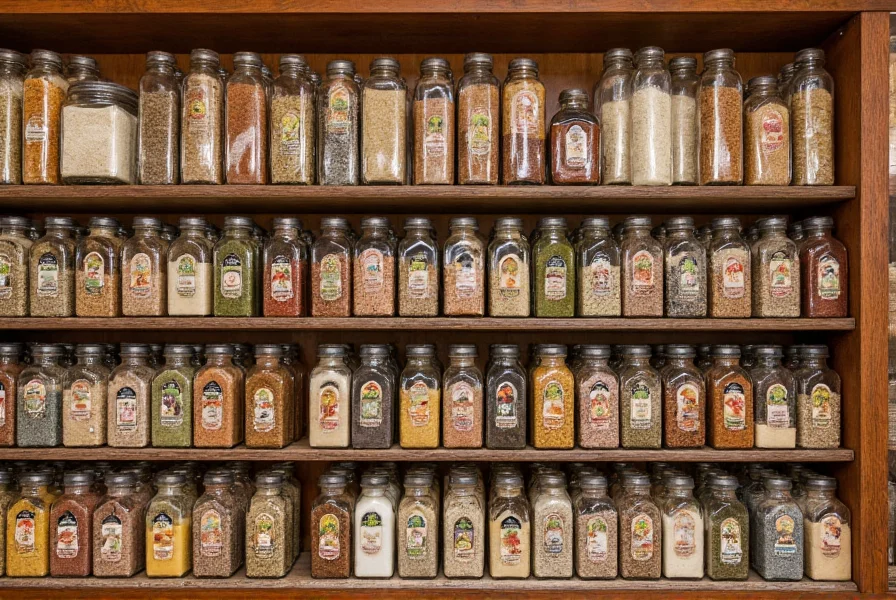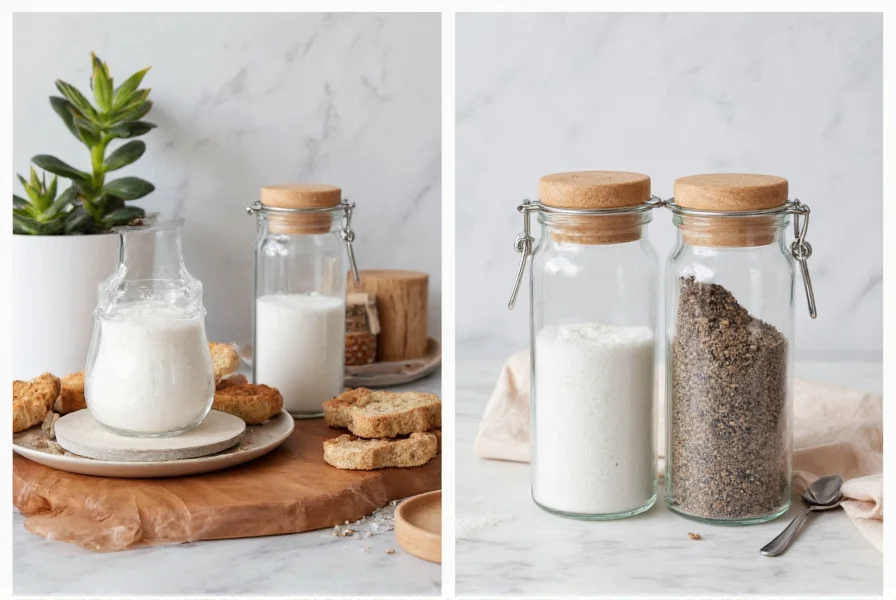When searching for the perfect salt and pepper shop, understanding the distinctions between various salt types and pepper varieties becomes essential. Specialty shops differentiate themselves through curated selections that go far beyond standard table salt and pre-ground pepper. These establishments typically offer mineral-rich sea salts harvested using traditional methods, single-origin peppercorns processed to preserve volatile oils, and unique finishing salts enhanced with natural ingredients.
Understanding Salt Varieties and Their Origins
Salt comes in numerous forms, each with distinctive characteristics shaped by geography and production methods. Sea salt, harvested through evaporation of seawater, retains trace minerals that influence both flavor and color. French fleur de sel features delicate pyramid-shaped crystals with subtle briny notes, while Hawaiian red alaea salt gets its distinctive color from volcanic clay rich in iron oxide.

Rock salts like Himalayan pink salt contain up to 84 trace minerals that create subtle flavor variations. Flake salts such as Maldon provide a satisfying crunch and quick dissolution, making them ideal finishing salts. When evaluating a salt and pepper shop's selection, look for clear labeling of origin, harvest method, and mineral content—reputable establishments provide this information transparently.
Pepper Diversity Beyond Black Peppercorns
Pepper enthusiasts understand that quality pepper shops offer far more than standard black peppercorns. True pepper diversity includes:
| Pepper Type | Origin | Flavor Profile | Best Culinary Uses |
|---|---|---|---|
| Vietnamese Tellicherry | Vietnam | Complex, floral, moderate heat | All-purpose seasoning, sauces |
| White Peppercorn | Indonesia | Milder, earthy, less complex | Light-colored sauces, mashed potatoes |
| Sichuan Peppercorn | China | Citrusy, numbing sensation | Asian cuisine, spice blends |
| Pink Peppercorn | Peru/Brazil | Fruity, mild heat | Desserts, fruit salads |
Freshness dramatically impacts pepper quality. Whole peppercorns maintain their volatile oils for up to three years when stored properly, while pre-ground pepper loses 50% of its aromatic compounds within 15 minutes of grinding. The best salt and pepper shops sell exclusively whole peppercorns and often feature on-site grinding stations. When evaluating where to buy gourmet salt and pepper, prioritize establishments that grind pepper to order rather than offering pre-ground options.
Identifying Quality in Specialty Shops
Exceptional salt and pepper shops demonstrate several key characteristics that distinguish them from ordinary grocery store offerings. First, they maintain controlled humidity environments—salt requires 40-60% humidity to prevent caking while preserving texture. Second, they provide detailed origin stories for each product, including harvest dates and producer information. Third, they offer sampling opportunities so customers can experience flavor differences firsthand.
When visiting a potential salt and pepper shop near me, observe how staff discuss products. Knowledgeable personnel can explain the differences between Madagascar pink pepper and Brazilian pink pepper, or describe why certain salts work better with chocolate versus seafood. They should understand proper storage requirements—pepper maintains freshness for 3-4 years in airtight containers away from light, while some finishing salts benefit from refrigeration.
Where to Find Specialty Salt and Pepper Stores
Locating quality salt and pepper shops requires understanding where to look. Major metropolitan areas often feature dedicated spice emporiums in historic districts or food markets. Cities like New York, San Francisco, and Chicago host specialty shops that have operated for decades, building relationships with global producers. For those searching for the best salt and pepper shop near me in smaller communities, consider these options:
- Local farmers' markets featuring artisan salt producers
- Specialty food stores with dedicated spice sections
- Cookware stores that curate high-end ingredients
- Online retailers specializing in single-origin spices

When evaluating online salt and pepper shops, check for harvest dates on product pages, transparent sourcing information, and packaging methods that preserve freshness. The best online specialty salt and pepper stores use oxygen-barrier packaging and often include silica gel packets to control moisture. They typically offer smaller trial sizes alongside larger quantities, recognizing that customers want to experience flavors before committing to larger purchases.
Proper Storage and Usage Techniques
Even the highest quality salt and pepper loses its distinctive characteristics without proper storage. Salt requires an airtight container in a cool, dark place—humidity causes caking while excessive dryness creates texture issues. Peppercorns maintain optimal flavor for 3-4 years when stored away from light and heat sources. Ground pepper, however, begins losing volatile compounds immediately after grinding.
For home use, consider these recommendations:
- Store salt in ceramic or glass containers (metal can react with minerals)
- Keep peppercorns whole until ready to use
- Use ceramic or carbon steel mills for pepper (avoid plastic which absorbs oils)
- Add finishing salts during the last minute of cooking to preserve texture
- Grind pepper directly onto food rather than into cooking liquids
Common Misconceptions About Salt and Pepper
Several myths persist about these fundamental seasonings. Many believe sea salt is nutritionally superior to table salt, but both contain comparable sodium levels—differences lie primarily in texture and trace minerals. Others think expensive pepper is always better, but value depends on intended use; Tellicherry works beautifully for steak but would overwhelm delicate fish dishes.
Understanding the differences between sea salt and table salt reveals that processing methods affect texture and dissolution rate more than nutritional content. Similarly, freshly ground pepper vs pre-ground makes a dramatic difference in flavor intensity but requires proper equipment to maximize benefits. The best salt and pepper shops educate customers about these distinctions rather than making exaggerated claims.
What makes a salt and pepper shop different from regular grocery stores?
Specialty salt and pepper shops focus exclusively on high-quality, diverse varieties with transparent sourcing. They typically offer single-origin products with detailed information about harvest methods and terroir, maintain optimal storage conditions, and provide sampling opportunities. Unlike grocery stores that prioritize shelf life and consistency, specialty shops emphasize freshness, uniqueness, and educational value about each product's characteristics.
How can I tell if a salt and pepper shop offers quality products?
Look for clear labeling of origin, harvest date, and processing method. Quality shops provide detailed information about each product's characteristics and recommended uses. Staff should demonstrate genuine knowledge about flavor profiles and proper storage. The shop should maintain controlled humidity levels, offer whole peppercorns rather than pre-ground options, and allow customers to sample products before purchasing.
What are the most versatile salt and pepper varieties for home cooking?
For salt, keep three varieties: a fine sea salt for everyday cooking, a flaky finishing salt like Maldon for final touches, and a specialty salt like smoked salt for specific dishes. For pepper, Tellicherry black peppercorns work well as an all-purpose option, while white pepper serves light-colored sauces. Sichuan peppercorns add unique dimension to Asian dishes. This combination covers most culinary applications while allowing exploration of distinctive flavors.
How should I store salt and pepper to maintain freshness?
Store salt in an airtight glass or ceramic container in a cool, dark place—humidity causes caking while excessive dryness affects texture. Keep peppercorns whole in airtight containers away from light and heat; they maintain optimal flavor for 3-4 years. Never store near the stove or dishwasher where temperature and humidity fluctuate. Avoid plastic containers for pepper as they absorb oils, and consider using carbon steel mills which preserve flavor better than plastic mechanisms.
What's the difference between freshly ground pepper and pre-ground?
Freshly ground pepper contains significantly higher levels of volatile aromatic compounds that create complex flavor. Studies show pre-ground pepper loses 50% of its essential oils within 15 minutes of grinding. The texture of freshly ground pepper also provides better adhesion to food surfaces. While pre-ground offers convenience, the flavor difference is substantial—comparable to using fresh versus dried herbs. For optimal results, grind pepper immediately before use with a quality mill that produces consistent particle size.











 浙公网安备
33010002000092号
浙公网安备
33010002000092号 浙B2-20120091-4
浙B2-20120091-4